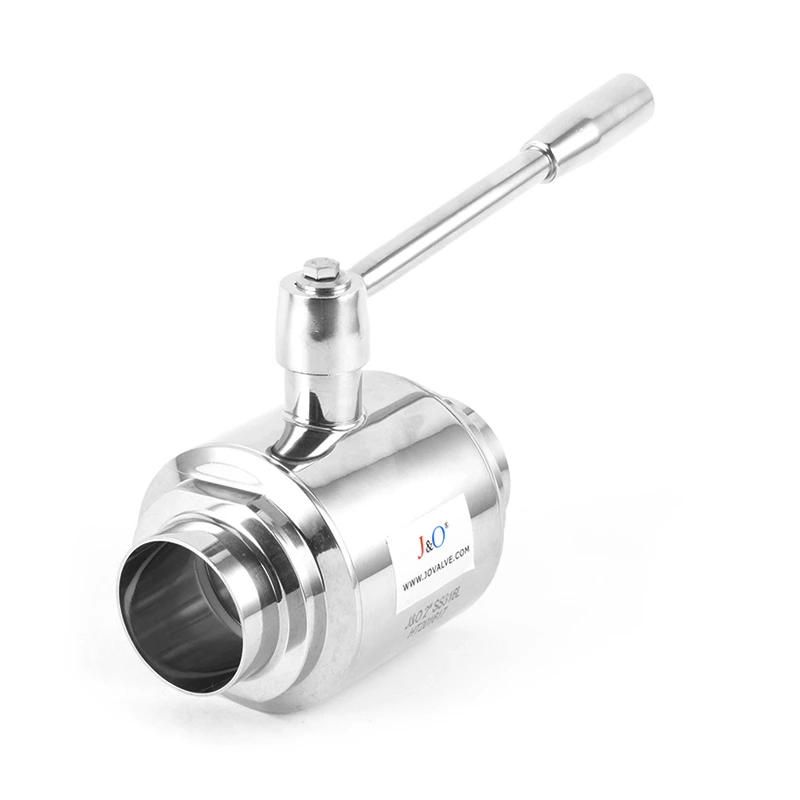How To Deal With Sealing Surface Leakage Of Sanitary Ball Valves
Sanitary Ball Valve Countermeasures for sealing surface leakage
1. Leakage at the packing; the leakage of pneumatic sanitary ball valves is mostly at the packing.
Reasons:
1. Wrong selection of packing, not resistant to corrosion by the medium, not resistant to high pressure or vacuum, high temperature or low temperature of the valve;
2. Wrong installation of packing, with defects such as small for large, poor spiral winding joints, tight top and loose bottom;
3. Packing has exceeded its service life, has aged, and lost its elasticity;
4. The valve stem is not precise, with defects such as bending, corrosion, and wear;
5. Insufficient number of packing turns, and the gland is not tightened;
6. The gland, bolts, and other parts are damaged, making it impossible to tighten the gland;
7. Improper operation, excessive force, etc.;
8. The gland is skewed, and the gap between the gland and the valve stem is too small or too large, causing the valve stem to wear and the packing to be damaged.
Maintenance methods:
1. The material and type of packing should be selected according to the working conditions;
2. The packing should be installed correctly according to relevant regulations. The packing should be placed and tightened one by one, and the joint should be 30℃ or 45℃;
3. The packing that has been used for a long time, aged, or damaged should be replaced in time;
4. The valve stem should be straightened after bending or wearing, and the seriously damaged one should be replaced in time;
5. The packing should be installed according to the specified number of turns, the gland should be tightened symmetrically and evenly, and the gland should have a pre-tightening clearance of more than 5mm;
6. The damaged gland, bolts and other parts should be replaced in time;
7. The operating procedures should be followed. Except for the impact handwheel, it should be operated with uniform speed and normal force;
8. The gland bolts should be tightened evenly and symmetrically. If the gap between the gland and the valve stem is too small, the gap should be appropriately increased; if the gap between the gland and the valve stem is too large, it should be replaced. Sanitary ball valve
II. Leakage of the sealing surface of pneumatic sanitary ball valve
Reasons:
1. The sealing surface is unevenly ground and cannot form a close fit line;
2. The top center of the connection between the valve stem and the closing part is suspended, misaligned or worn;
3. The valve stem is bent or assembled incorrectly, causing the closing part to be skewed or misaligned;
4. The quality of the sealing surface material is improperly selected or the valve is not selected according to the working conditions.
Maintenance method:
1. Correctly select the material and type of the gasket according to the working conditions;
2. Carefully adjust and operate smoothly;
3. The bolts should be tightened evenly and symmetrically, and a torque wrench should be used. The pre-tightening force should meet the requirements and should not be too large or too small. There should be a pre-tightening gap between the flange and the threaded connection;
4. The gasket assembly should be aligned with the center and the force should be evenly applied. The gasket is not allowed to overlap or use double gaskets;
5. The static sealing surface is corroded, damaged, or the processing quality is not high. It should be repaired, ground, and color checked to make the static sealing surface meet the relevant requirements;
6. When installing the gasket, pay attention to cleaning. The sealing surface should be cleaned with kerosene, and the gasket should not fall to the ground.
